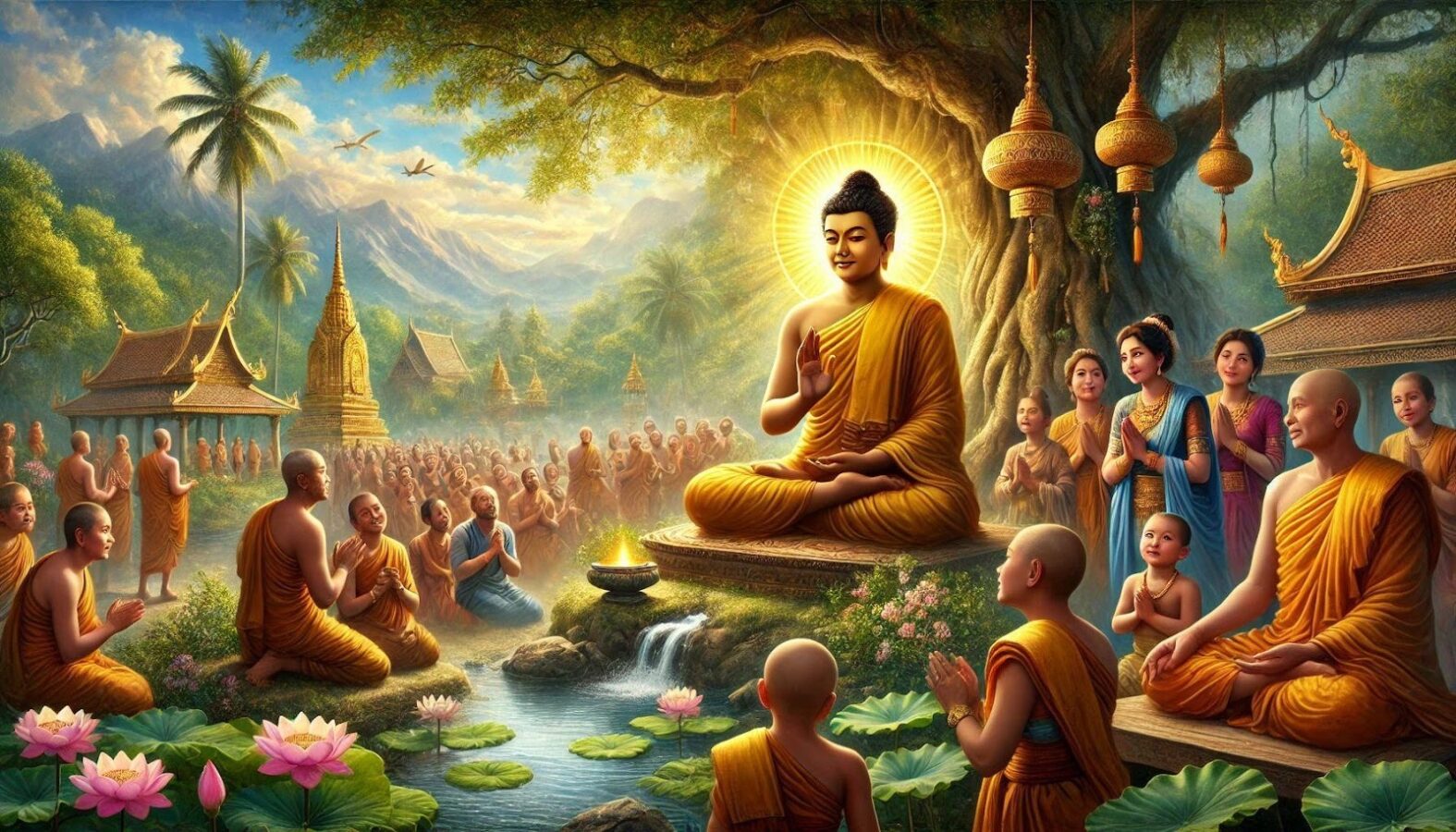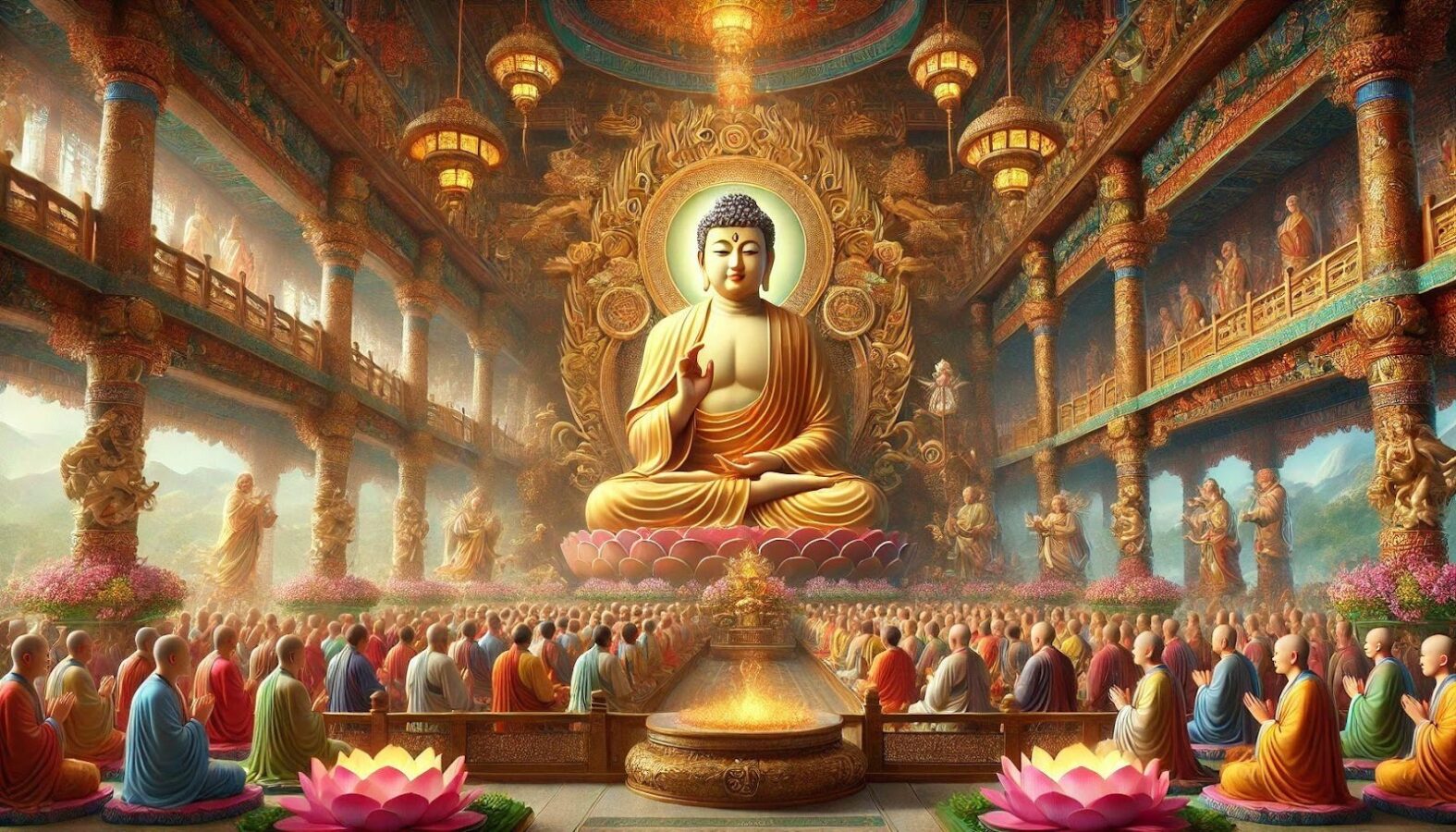
Date: 08/17/2024 08/18/2024
Location: Star Lake Meditation Center
Teacher: Otto Huang
Dharma Talk
The Buddha’s Silent Response
Once, a mendicant from the Vajji clan who was following a heterodox path visited the Bamboo Grove Monastery at Veluvana, north of the capital city of Rajagaha in the Magadha kingdom, to see the Buddha. He asked the Buddha,
“Gotama! Is there a ‘self’?”
The Buddha did not reply and responded with silence.
“Then, Gotama! Is there no ‘self’?” the mendicant from the Vajji clan continued to ask.
The Buddha still responded with silence.
He asked a second and third time, but the Buddha remained silent each time.
Thinking that there was no point in staying since the Buddha did not answer his questions, the mendicant got up and left.
At this moment, Venerable Ananda, who was standing behind the Buddha serving as his attendant, felt puzzled and asked the Buddha, “World-Honored One! Why didn’t you answer him? Wouldn’t he misunderstand and think you couldn’t answer his questions, thereby developing wrong views?”
The Buddha replied to Venerable Ananda, “If I had answered ‘there is a self,’ wouldn’t that align me with those ascetics and Brahmins who hold eternalist views? Wouldn’t this contradict my realization that ‘all phenomena are non-self’?
“If I had answered ‘there is no self,’ wouldn’t that align me with those ascetics and Brahmins who hold nihilist views? This would only increase the confusion of the mendicant from the Vajji clan, who is accustomed to the idea of a ‘self,’ thinking that the ‘self’ he relied on to understand things no longer exists.
“Those who previously adhered to the eternalist view and then hear about ‘non-self’ might still be caught in their old way of thinking, believing that the ‘self’ can be eradicated. This would lead them into nihilist views. The Tathagata transcends the dualistic thinking of eternalism and nihilism, standing on the middle path and speaking from a truthful and unbiased perspective. I teach that all phenomena are impermanent because they decay and change. Despite this decay and change, there is continuity, so nothing is completely annihilated. Everything exists in a state of impermanence and continuity.
“All arising and existence depend on conditions. When those conditions cease to exist, the phenomena also decay and disappear. Due to ignorance, there are volitional actions; due to volitional actions, there is consciousness; due to consciousness, there is name and form; due to name and form, there are the six sense bases; due to the six sense bases, there is contact; due to contact, there is sensation; due to sensation, there is craving; due to craving, there is clinging; due to clinging, there is becoming; due to becoming, there is birth; and due to birth, there are sorrow, lamentation, pain, grief, and despair—a whole mass of suffering. Conversely, the cessation of these results also has its cause: when ignorance is completely extinguished, volitional actions cease; when volitional actions cease, consciousness ceases; when consciousness ceases, name and form cease; when name and form cease, the six sense bases cease; when the six sense bases cease, contact ceases; when contact ceases, sensation ceases; when sensation ceases, craving ceases; when craving ceases, clinging ceases; when clinging ceases, becoming ceases; when becoming ceases, birth ceases; when birth ceases, all the sorrows, lamentations, pains, griefs, and despairs—the whole mass of suffering—cease.”

